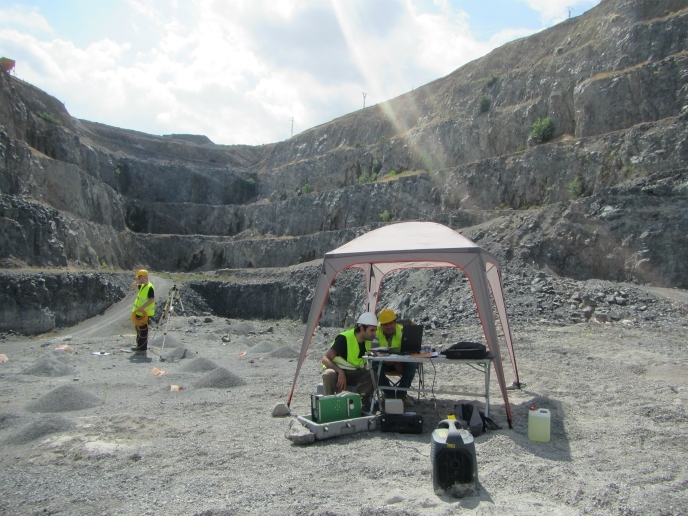Novel forest fire-fighting technology allows all end users to contribute
Forest fires have become commonplace. Each year around summertime, Spain, Portugal, France, Greece and Italy combined see around 500 000 ha of their forests go up in smoke. This is caused notably by rural depopulation — as activities that were previously keeping forest fires under control are increasingly becoming a thing of the past — and is speeding up climate change. In fact, the local fires our ancestors used to deal with are now increasingly evolving into ‘mega-fires’. The chink in our forests’ armour resides in ‘Wildland urban interface’ (WUI) areas, which are quickly expanding. ‘These areas are critical in this process, since they require special attention from the emergency forces and are a typical focus of fire ignition. WUI often lack the required fire prevention countermeasures, due to their cost and their execution requirements in terms of land occupation, vegetation removal and infrastructures,’ explains Joaquín Catalá Lloret, CTO of Pyro Fire Extinction in Spain. Since it was founded in 2011, Pyro Fire Extinction has been contributing to the protection and preservation of forests by designing, engineering and producing innovative solutions for the control and extinction of forest fires. In 2014, the company’s know-how granted it a place in the FP7-funded AF3 project to develop technologies that would improve the efficiency of fire-fighting operations. One year later, the company received H2020 funding for the SMART FIRE BARRIER (Innovative Forest Fires Prevention Infrastructure for Residential Areas, Forestry and Critical Infrastructures) project. SMART FIRE BARRIER revolves around the Pyro Smart Fire Barrier, a completely new prevention tool. Composed of extinguisher Nub-e capsules developed under AF3, the system is able to extinguish incipient fires by itself and can be used in a mobile firebreak to support the action of fire brigades and volunteers. ‘Nub-e capsules are easy to transport and to install on the field, and once placed they remain operational for months,’ says Catalá. ‘The technology is purely based on the temperature elevation generated by the fire, without the use of explosives or electronics. It makes it possible to deliver a safe, robust and easy to use product while reducing the need for maintenance. Once activated, each capsule sprays its content over the vegetation, protecting the defined area and preventing it from burning.’ No need to remove vegetation or modify the landscape: the Smart Fire Barrier is modular. It adapts to existing infrastructure and terrain configuration in order to provide a cost-effective solution for small real estate owners. From smart cities to smart landscape Over the next five years, Pyro Fire Extinction wants its system to disrupt the market by making it possible for everyone to contribute to the fight against forest fires. ‘We understand that we cannot be inhabitants of Smart Cities while being strangers outside them, and thus we propose to connect our cities with their environment, creating the Smart Landscape,’ says Catalá. The first step to living up to this ambition was to conduct a feasibility study under phase 1 of the SME Instrument. Thanks to EU funding, the company was able to design an effective market segmentation strategy and a marketing strategy aimed at both specialists and laypeople. ‘As a company, phase 1 has allowed us to reflect on how to successfully address target customer segments over time, in a way that is compatible with the company’s growth strategy,’ explains Catalá. ‘We also conducted market prospection activities with fire fighters, neighbours, public administration managers, etc. in order to study different cases and to understand clearly what the situations in which the introduction of our Smart Fire Barrier can make a difference are. Furthermore, as a result of having performed the feasibility study, we have now protected our technology by means of a patent application, and we have published several articles in scientific media in order to let others know about our approach and experimental results.’ Next steps Validation of the technology with end users is also well under way. ‘For us, this has been a priority in every stage of PYRO Smart Fire Barrier: we have extensively validated our technology with end-users and independent research institutions, which helps us define the best product, and we have engaged a relevant number of recognised experts for the prescription of Pyro Smart Fire Barrier in the sector,’ says Catalá. Most of this process took place under AF3 with support from the public agencies involved in the project. ‘AF3 has made it possible for us to achieve technological milestones in a very short period of time, and to have a product tailored to their expectations. However, this project is only based on technology demonstration, and we need to overcome this stage in order to bring our product to the market.’ This is where phase 2 of SME Instrument funding will be crucial. Catalá and his team expect that this new phase will allow them to convert the technology into a tangible, marketable product, as well as reinforcing their team with business profiles. ‘Our main objective under SME Instrument Phase 2 is to perform pilot testing of Smart Fire Barrier with end-user specialists in order to obtain visible success cases. These cases will enable us to show our customers that what we offer will significantly increase their level of safety and even more: they will be granted the reward of contributing to safeguarding their environment. Achieving a suitable product certification from independent institutions is also an objective of Phase 2: it will help us to commercialise the product internationally,’ says Catalá enthusiastically.







